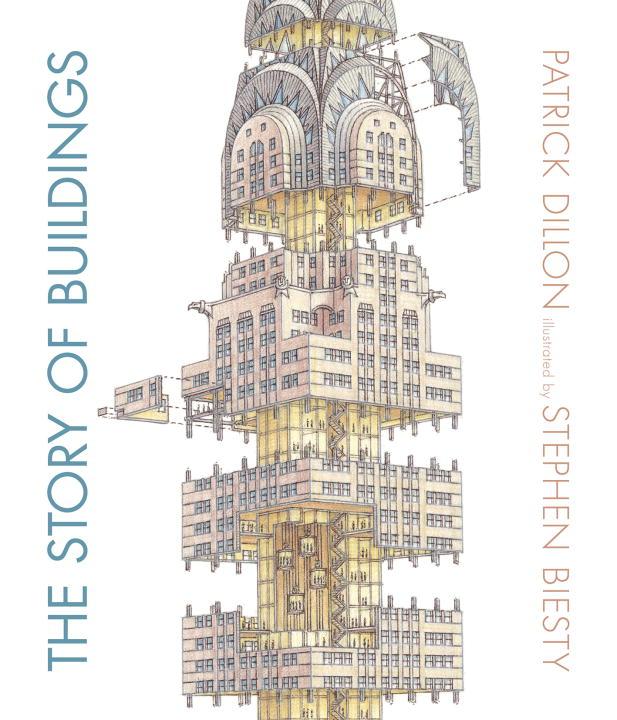2018 School Spending Survey Report
The Story of Buildings
illus. by Stephen Biesty. 96p. chron. diag. illus. index. maps. Candlewick. 2014. Tr $19.99. ISBN 9780763669904. LC 2013943096.
COPY ISBN
 Gr 5 Up—"Every building has a story to tell." Beginning with the Egyptian pyramid of Djoser and progressing through the Greeks and Romans, the Renaissance, and on to modern skyscrapers and Paris's Pompidou Center, Dillon ties advances in architecture and building to specific cultural and economic conditions. In some cases, he credits the genius of individuals, such as Palladio. Each chapter begins with a historical overview and is followed by a description and illustration of a representative building. Clear explanations of basic building concepts (cantilevers, arches and domes, reinforced concrete) are balanced with discussions of more abstract principles such as symmetry, geometry, and pattern. But the volume is truly set apart by Biesty's elaborate, meticulously detailed, and clearly labeled drawings (some stretching across two large-format pages plus two half-page fold-outs). Widely known for his 1992 Incredible Cross Sections, Biesty here adds a kaleidoscopic yet tightly integrated visual dimension that will transfix readers. The section on London's Crystal Palace, designed by gardener Joseph Paxton and built for the Great Exhibition of 1851, is fascinating, outlining the modular design and rapid construction from 300,000 sheets of glass and 1,000 iron columns. Sections detailing Beijing's Forbidden City, Hagia Sophia in Istanbul, the Taj Mahal, and other buildings from outside the European tradition are worked deftly into the narrative.—Bob Hassett, Luther Jackson Middle School, Falls Church, VA
Gr 5 Up—"Every building has a story to tell." Beginning with the Egyptian pyramid of Djoser and progressing through the Greeks and Romans, the Renaissance, and on to modern skyscrapers and Paris's Pompidou Center, Dillon ties advances in architecture and building to specific cultural and economic conditions. In some cases, he credits the genius of individuals, such as Palladio. Each chapter begins with a historical overview and is followed by a description and illustration of a representative building. Clear explanations of basic building concepts (cantilevers, arches and domes, reinforced concrete) are balanced with discussions of more abstract principles such as symmetry, geometry, and pattern. But the volume is truly set apart by Biesty's elaborate, meticulously detailed, and clearly labeled drawings (some stretching across two large-format pages plus two half-page fold-outs). Widely known for his 1992 Incredible Cross Sections, Biesty here adds a kaleidoscopic yet tightly integrated visual dimension that will transfix readers. The section on London's Crystal Palace, designed by gardener Joseph Paxton and built for the Great Exhibition of 1851, is fascinating, outlining the modular design and rapid construction from 300,000 sheets of glass and 1,000 iron columns. Sections detailing Beijing's Forbidden City, Hagia Sophia in Istanbul, the Taj Mahal, and other buildings from outside the European tradition are worked deftly into the narrative.—Bob Hassett, Luther Jackson Middle School, Falls Church, VADillon and Biesty highlight a diverse selection of buildings from different eras, with most being given a splendid gatefold cross-section illustration. Each picture is thoroughly but unobtrusively annotated; the verso of each gatefold page explicates a feature germane to the building. The book provides a modest social and political account of (mostly) European history, and its absorbing pictures and spacious design invite browsing. Timeline. Ind.
Beginning with an ingratiatingly brief historical summary of how the human need for shelter brought us from caves to high-rises, Dillon and Biesty then circle back to provide more detailed attention to particular eras (Ancient Greece, seventeenth-century India), zooming in on one notable structure (the Parthenon, the Taj Mahal). A diverse selection of buildings are highlighted, from the Pyramid of Djoser through the Hagia Sophia through the Crystal Palace to the Pompidou Center, with most being given a splendid gatefold cross-section illustration. Working with colored pencil, Biesty uses a gentler line than in his hyperattentive Cross-Sections books, but there's no loss of detail: you could, if so inclined, count the steps leading up to the Hall of Supreme Harmony in the Forbidden City. Each picture is thoroughly but unobtrusively annotated, and Dillon and Biesty use the verso of each gatefold page to explicate a feature germane to that building: an explanation of reinforced concrete for Gropius's Bauhaus in Dessau, Germany, for example. The main text has a nice narrative flow that links the buildings and eras together, and Dillon has a gift for evocation ("the columns and arches [of Notre-Dame] beat a rhythm that echoed around the worshippers like a great stone hymn") as well as explanation ("Arches push outward onto the walls they stand on. To keep the walls from falling, engineers strengthen them with buttresses that push back in"). Read chronologically, the book provides a modest social and political account of (mostly) European history, but its absorbing pictures and spacious design invite you to start where you like. You'll go back for more. An index and a timeline, fascinating in its own right, are appended. roger sutton
ALREADY A SUBSCRIBER? LOG IN
We are currently offering this content for free. Sign up now to activate your personal profile, where you can save articles for future viewing





Be the first reader to comment.
Comment Policy:
Comment should not be empty !!!